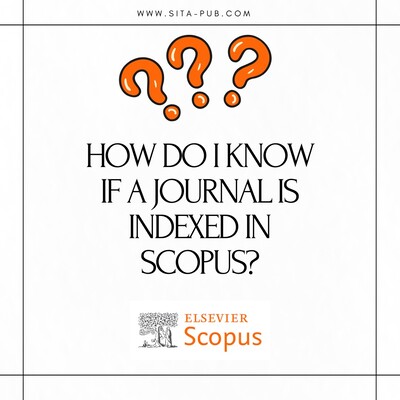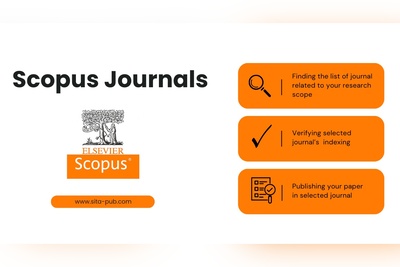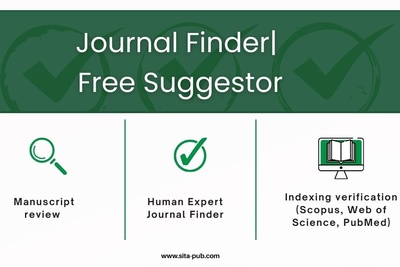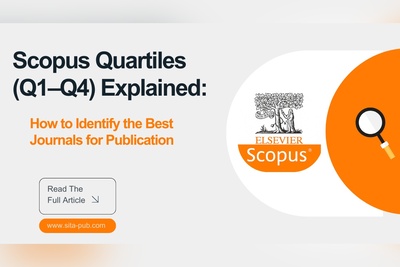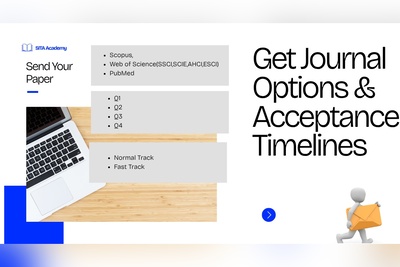How to Identify Journals with High Acceptance Rates for Your Paper
Learn how to identify reputable journals with high acceptance rates for easier publication. This guide explains acceptance rates, how to check journal credibility, where to find suitable journals.

Finding the right journal for your research can feel like a maze—especially if you are trying to balance credibility, indexing, and a reasonable chance of acceptance. Many researchers, whether early-career or experienced, want to publish in reputable peer-reviewed journals but prefer journals with relatively higher acceptance rates so their publication journey is smoother and faster.
The good news? With the right strategies and tools, you can identify credible journals that are more likely to accept your work—without falling into the trap of predatory or low-quality outlets.
In this article, we will explore what acceptance rate really means, how to check it, where to find journals with higher acceptance rates, how to evaluate credibility, and how to get personalized guidance based on your specific paper.
Why Journal Acceptance Rate Matters
The acceptance rate of a journal is one of the most practical indicators of how competitive it is. A lower acceptance rate often signals high prestige and selectivity—but for many researchers, it also means longer review times, multiple rejections, and the need for extensive revisions.
On the other hand, a journal with a higher acceptance rate can mean:
Faster publication timelines
Easier navigation through peer review
Better chances of receiving constructive feedback rather than immediate rejection
Reduced risk of wasting months on unsuccessful submissions

However, a high acceptance rate does not automatically mean the journal is low quality. Many mid-tier and niche journals are reputable, indexed, and peer reviewed—yet they accept a higher percentage of submissions simply because they receive fewer manuscripts or have broader scopes.
The key is finding that balance.
What Does “Journal Acceptance Rate” Really Mean?
The acceptance rate is the percentage of submitted manuscripts that a journal accepts for publication within a specific period.
For example:
If a journal receives 1,000 submissions and accepts 150, its acceptance rate is:
150 / 1000 × 100 = 15%
However, acceptance rate varies widely based on:
Journal prestige
Field of study
Volume of submissions
Scope and selectivity
Editorial policies
Article types (reviews vs original research)
Where Do Acceptance Rates Come From?
Acceptance rates aren’t always publicly available because:
Journals are not required to publish them
Some journals consider them confidential
The numbers change each year
Still, there are reliable ways to estimate or verify them using indexing databases, analytics platforms, and third-party resources.

How to Check a Journal’s Acceptance Rate
Here are the most common ways to find acceptance rate information:
1. Journal’s Official Website
Some journals publish acceptance rate data in sections like:
About the Journal
Editorial Policies
Submission Guidelines
Annual Reports
This is the most authoritative source—but not all journals disclose this information.
2. Publisher Reports
Major publishers sometimes release acceptance statistics:
Elsevier
Wiley
Taylor & Francis
Springer Nature
IEEE
These publishers occasionally publish annual performance summaries with useful metrics.
3. Scimago Journal & Country Rank (SJR)
While SJR does not provide the acceptance rate directly, it gives:
Citation metrics
H-index
Quartile (Q1–Q4) ranking
Editorial info
In general, Q3 and Q4 journals often (not always) have higher acceptance rates.
4. Journal Finder Tools
Platforms like:
Elsevier Journal Finder
Springer Journal Suggester
IEEE Journal Finder
ResearchGate Journal Recommender
Some of these tools offer insights into competitiveness and acceptance likelihood.
5. Community Feedback
Experienced researchers often share acceptance rate estimates in:
ResearchGate discussions
Academia StackExchange
University writing centers
This is anecdotal but helpful—especially for specialized fields.
Where to Find High Acceptance Rate Journals
If your goal is to publish faster and with a higher chance of acceptance, the following categories of journals can be helpful:

1. Q3 and Q4 Scopus Journals
These journals are:
Peer reviewed
Indexed
Reputable and recognized
Less competitive than Q1 or Q2
They often maintain acceptance rates between 25–60%, depending on the field.
2. Journals in Niche or Emerging Research Areas
Specialized journals receive fewer submissions, so they tend to accept more relevant papers—especially if your research aligns well with their scope.
Examples of niches:
Sustainable technologies
Regional studies
Applied sciences
Education research
Humanities and social sciences
3. Open Access Journals with Moderate Impact
Many OA journals have solid peer review and credibility but aim to publish more content, resulting in higher acceptance rates.
Just ensure they are:
Indexed in Scopus or Web of Science
Listed on DOAJ
Published by reputable organizations
4. Society or Association Journals
Professional societies often publish journals primarily for their members and research communities. These journals are often credible and supportive but not overly competitive.
5. Newer Journals (2–7 years old)
New journals—especially from reputable publishers—are eager to build their indexing, readership, and citation base.
As a result, they often have:
High acceptance rates
Fast review processes
Supportive editorial teams
But make sure they are at least indexed in Scopus/ESCI/DOAJ.
How to Check a Journal’s Credibility Before Submitting
A high acceptance rate alone is not enough. You must ensure the journal is credible, indexed, and ethically managed.

Here is your checklist:
1. Confirm Indexing Status
Verify that the journal is indexed in:
Scopus (via Scopus Sources)
Web of Science (Master Journal List)
DOAJ (for open access)
Never rely solely on what the journal claims. Always check the official indexing database.
Related Article
2. Review the Publisher
Trustworthy publishers include:
Elsevier
Springer
Wiley
Taylor & Francis
IEEE
MDPI
Sage
Hindawi (now under Wiley)
If the publisher seems unknown or suspicious, investigate further.
3. Check the Editorial Board
The board should include:
Recognized researchers
University-affiliated scholars
International representation
A weak or unprofessional editorial board is a red flag.
4. Examine Peer Review Transparency
Credible journals clearly explain:
Review steps
Review timelines
Acceptance decision criteria
Hidden or unclear review processes can indicate a predatory journal.
5. Avoid Red Flags
Be cautious if you see:
Guarantees of quick acceptance
Poor grammar on the website
Unclear contact information
Extremely high APCs with no transparency
Fake indexing claims
Conclusion: Acceptance Rate Matters—but Credibility Matters More
A journal with a higher acceptance rate can be an excellent choice if it is also reputable, indexed, and peer reviewed. By understanding how acceptance rates work, using the right tools, and verifying credibility, you can significantly increase your chances of successful publication.
But every research paper is different—and choosing the right journal requires a careful match between your topic, the journal’s scope, impact level, and acceptance likelihood.
Need Help Finding a High-Acceptance-Rate Journal That Matches Your Paper?
SITA Academy provides a professional paper analysis service where experts review your manuscript and recommend the most suitable journals with acceptance rates above 90%, tailored to your field and research style.
This ensures:
Faster publication
Higher acceptance probability
Reputable, indexed journals
A stress-free submission process
